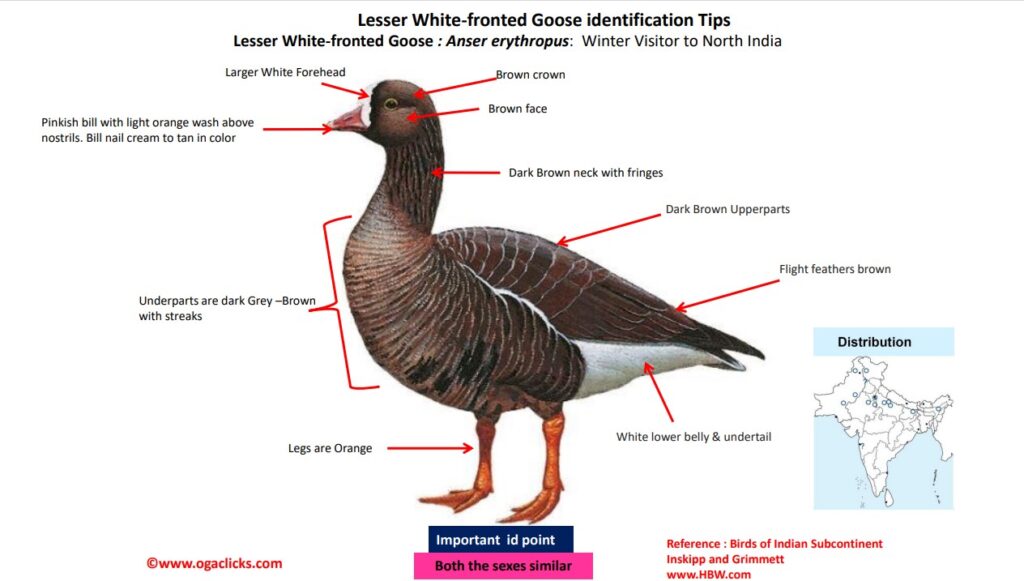
Lesser White-fronted Goose Anser erythropus
Etymology:
- Anser : Latin word for Goose
- Erythropus : Greek word eruthros –red; pous –foot
Vernacular Names: Mar: Swetmal Hans, Pandhrya manecha kalhansa
Distribution in India: Winter visitor in North, West & North East India.
Description: Size of 53–66 cm; Weight of male 1950–2300 g, Weight of female 2100–2150 g; wingspan of 115–135 cm. It has a white forehead and has white claws, with shorter, thicker neck and slighter build, has yellow eyering. It has a brighter pink and smaller, triangular bill, darker head, neck and upperparts. The whole head and upper two-thirds of neck uniformly dark brown. The female is slightly smaller and belly barring less heavy than in male, white on forecrown is typically smaller in extent and forehead is less steep. The juvenile lacks white forehead, black spotting below and transverse lines on upperparts; bill is duller than that of adult, usually with brown or dark grey nail, yellow eyering much narrower and also has duller legs and feet.
Habitat: It is found in arctic open habitats, particularly scrub-covered and lightly wooded tundra near taiga zone; also, lakes and slopes in mountain regions. It breeds at up to 700 m. It winters on dry ground, salt steppe and saltmarshes, other short-grass semi-arid biotopes and agricultural land.
Food habits: It eats vegetarian diet, mainly green parts of grasses, plants and small bushes. It feeds mostly on land, by grazing.
Breeding habits: They breed in May/Jun. They are monogamous and lifelong. The nest is shallow depression in dwarf shrub heath on ground lined with grass, moss and down; often in close proximity to open water or extensive marshes in snow-free areas. They lay a clutch of 4–6 creamy-white eggs. The incubation period is 25–28 days, done by female alone. The chicks have dark brown down above, yellowish below. The fledging period is 35–40 days.